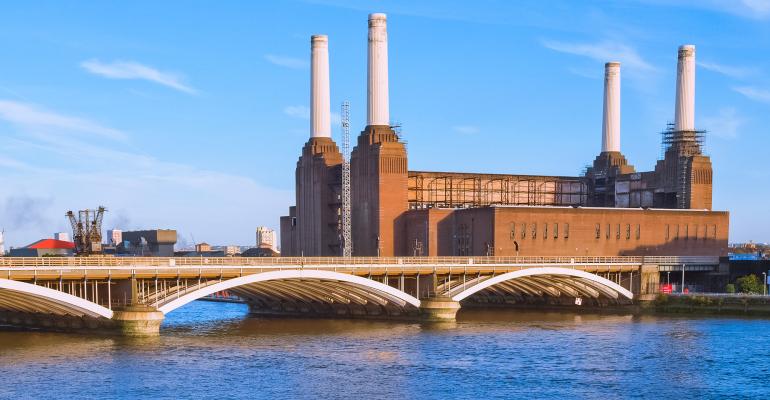(Bloomberg)—London’s famous Battersea Power Station will open its doors for the first time in almost 40 years on Friday, taking on a new lease of life following a glitzy but sometimes controversial renovation.
Once a coal-fired power station which supplied a fifth of London’s electricity, the building is now home to hundreds of shops, bars, and restaurants. The £9 billion ($10 billion) transformation, backed by a group of Malaysian investors who bought the site for £400 million in 2012, will also see 25,000 people living and working in and around the colossal building which once pumped energy to Buckingham Palace and the Houses of Parliament.
Efforts to revive Battersea Power Station have resulted in numerous setbacks since it was decommissioned in 1983, including an attempt to turn the building into a theme park and a mall that would have been suspended between its chimneys. Now, the building’s old turbine halls have been converted into an upmarket retail space, hosting luxury brands including Rolex Group and Mulberry Group Plc.
Apple Inc. is among the corporate giants leasing space inside the largest brick building in Europe, which generated power for 48 years after its opening in 1935. The iPhone maker will become the power station’s largest tenant, with 1,400 employees relocating to its new European headquarters which will occupy six floors of the central Boiler House, a space so big that it could fit St Paul’s Cathedral inside.
The Boiler House will also host a 24,000 square foot food hall due to open next year. Brands from celebrity chefs Gordon Ramsay and Vivek Singh will have a presence in the power station.
A new district of around 4,000 homes, which have drawn criticism for a lack of affordability, will also stand over the south bank of the River Thames.
“In the Battersea case, there was a basic trade-off,” said Anthony Breach, senior analyst at Centre for Cities. Splurge on preserving and revamping the iconic power station, or save money by demolishing the building and use the extra cash to build affordable housing.
Councillors for the Labour Party will not attend the power station’s opening on Oct. 14 because of a lack of social housing, the BBC reported last week.
Still, the company says the power station’s grand reopening will create 20,000 new jobs and boost the local and national economy. It expects £43 million of local expenditure to be created annually in Wandsworth, the district which the building towers over.
It could also pave the way for a new transport infrastructure funding model in London, as the Battersea Power Station project includes an extension of the Northern Line.
“That should be replicated over the coming decades, especially given that Transport for London faces a massive funding crunch,” Breach said.
© 2022 Bloomberg L.P.





